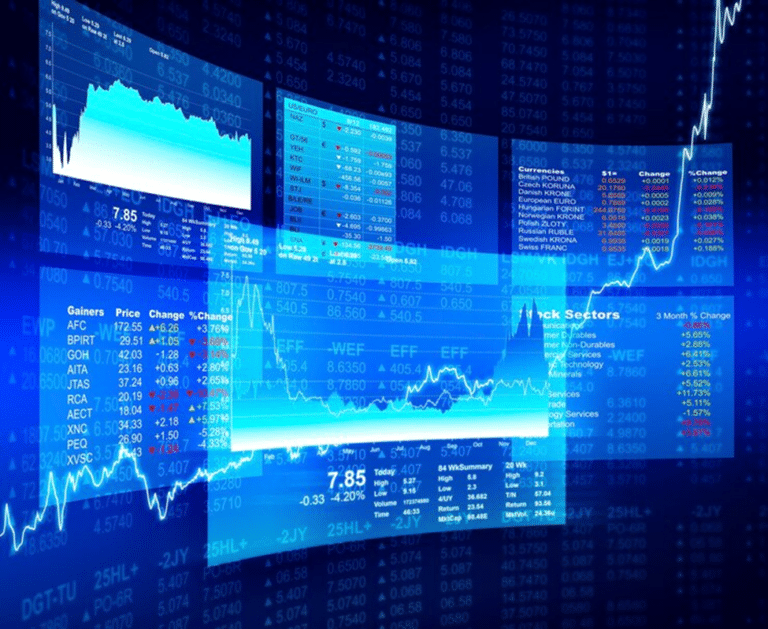It is no secret that financial markets are characterized by high volatility. This, in turn, affects the risk of investing, increasing it. On the other hand, it can also be profitable. Increased volatility may mean higher profits. How is this possible? We explain below!
Volatility – Friend or Foe of the Investor?
The volatility coefficient is a very common phenomenon. And while for some, volatility means significant losses – for others, it can be an opportunity to enrich themselves. Also known as CV, it has found applications in many fields. Apart from finance, a great example of this is gambling.
Volatility is used to determine the performance of a slot machine during gameplay. Knowing its level, one can understand how often the slot pays out winning combinations and what size of winnings can be expected. The service offering a selection of the best online casinos with no deposit bonuses https://gryonline2.pl/kasyno-bez-depozytu/ also offers the opportunity to play slots for free, to test not only bonus options but also two main indicators: RTP and Volatility.
High volatility on a slot is a sign that you may win less frequently but more. On the other hand, a low CV machine wins more often but in smaller amounts. The same applies to volatility in finance.
What is Volatility in Finance?
Volatility is an indicator of the degree of market or securities value fluctuations. It indicates how quickly and to what extent prices change. In short, volatility determines price fluctuations that occur during a given period.
There are two types of volatility – historical and expected. The first refers to prices and fluctuations recorded in the past. Moreover, it expresses the level of risk taken during investing. On the other hand, implied volatility, also known as expected, refers to quotes determining this indicator in the future.
The value of this coefficient is given in percentages. Based on this, volatility can also be assessed as:
- very low – below 25%,
- average – from 25 to 45%,
- intensive – from 45 to 100%,
- very intensive – above 100%.
Thus, volatility is an indicator similar to standard deviation. However, it is not the same due to its application.
Volatility Indicator – Examples
With high market volatility, prices experience sharp jumps in a short period and change very dynamically. This refers to prices of stocks, currencies, securities, commodities, indices, etc. On the other hand, with a low volatility index in the market, much greater stability and smaller price fluctuations can be observed. And although high volatility means greater losses for some – the most experienced traders see it as an opportunity to make profitable investments.
What Influences Market Volatility?
Usually, volatility can be observed after unexpected events, including natural disasters (floods, droughts), epidemics, as a result of war, or other events of a political nature. Additionally, it can also be triggered by macroeconomic data readings, the publication of indicators, and economic data.
However, that’s not all. Very significant factors influencing volatility also include the economic situation – not only in the country but globally. Equally important is the monetary policy of the central bank in the country. The internal situation in a given market or company is also crucial.
A great example of a factor causing high volatility is the coronavirus pandemic. It caused an extremely high level of volatility on the market, which translated into even three times greater investor activity. Another incentive for investors was the fact that large-cap companies were also affected by the volatility of the exchange rate. Similarly high volatility could be observed after the outbreak of war in Ukraine. This event strongly influenced the entire economy, benefiting stock traders.
Can Volatility in the Financial Market be Measured?
Of course, it can! What’s more, the volatility coefficient can be calculated yourself! However, to do this, you need to have some data. One of them is the ratio of standard deviation to the mean, which needs to be calculated and then multiplied by 100. This is because volatility is expressed in percentages.
So how do you calculate standard deviation? This indicator is the square root of the variance, which is the arithmetic mean of the squares of deviations calculated for specific values from the expected value.
Sounds complicated? There are also several other ways to determine the volatility coefficient. This can be done by calculating dispersion measures – including variance, standard deviation, mean absolute deviation, quartile deviation, range, quartile range.
How to leverage market volatility in the financial market?
Experienced players primarily benefit from the volatility index. Furthermore, observing changes and current trends is of significant importance. Additionally, skillful recognition of factors causing price fluctuations is crucial. Identifying these factors can be extremely helpful, for example, in determining the right moment to enter or exit a particular market.
To achieve this, it is essential to use appropriate risk management strategies. Equally valuable are tools such as the Average True Range (ATR) indicator. This indicator measures changes in prices over a specific time period. In times of increasing volatility, the ATR indicator determines the distance between the previous closing and the current candle’s maximum. Conversely, when volatility is decreasing, the ATR indicator relates to the previous closing value and the minimum of the next candle. Consequently, the ATR indicator informs us about price fluctuations, defining volatility.


